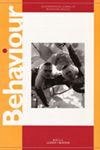萨利希海斑海豹(Phoca vitulina richardii)在开放水域的群体行为
IF 1
4区 生物学
Q4 BEHAVIORAL SCIENCES
引用次数: 0
摘要
斑海豹(Phoca vitulina)通常在休息和产崽季节在拖运地点形成较大的群体,但通常被认为是孤独的在海上。偶尔可以观察到更大的个体群在拖出地点,被迫的瓶颈通道或河口附近游动,猎物集中,空间有限。最近,在萨利希海(Salish Sea)观察到孤立的海豹大规模聚集事件,这些事件距离拖出地点(超过1公里)或强制瓶颈区域很远。在2019年4月至6月(但主要是5月)至2021年,在美国华盛顿州阿纳科特斯的Burrows Pass (Anacortes, WA, USA),观察到幼海豹和成年海豹在1-2个体长的范围内成群结队(),规模从6-50只()不等,并周期性地潜入水中,似乎是在捕猎和追逐猎物。这些组合主要发生在洪水和低潮时。根据观测到的地表活动、栖息地类型、全年使用该区域觅食的个体频率以及发生期间的潮汐偏好,这些事件可能是觅食事件。在普吉特海湾南部和普吉特海湾中部也有类似的大型群体被记录在案,首次发现于2016年,并于2017年2月正式记录在案。这些群(从20-30到150+)全年都在不同的潮汐状态下发生。虽然一些目击事件明显是觅食行为,但其他目击事件似乎是在休息、旅行或社交。港海豹在开放水域的行为并没有被很好地记录下来,文献综述也没有发现其他关于大型水中群体的公开报道。对生态关系(如猎物产卵、猎物丰度或其他环境相关因素)的调查和对水下海豹行为的观察将有助于确定这种看似新奇的行为的原因。本文章由计算机程序翻译,如有差异,请以英文原文为准。
Open water grouping behaviour in harbour seals (Phoca vitulina richardii) of the Salish Sea
Harbour seals (Phoca vitulina) commonly form larger congregations at haul out locations during times of rest and pupping season, but are generally thought to be solitary at sea. Occasionally larger clusters of individuals may be observed swimming near haul out sites, forced bottlenecking channels or mouths of rivers with concentrated prey and restricted space. Recently, isolated occurrences of mass gatherings of harbour seals have been observed in the Salish Sea that were distanced from haul out sites (over 1 km away) or forced bottlenecking regions. In April-June (but primarily May) 2019–2021 juvenile and adult harbour seals in Burrows Pass (Anacortes, WA, USA) were observed in large groups () ranging in size from 6–50 individuals () within 1-2 body lengths of each other and periodically diving down seemingly hunting and chasing prey. These groupings primarily occurred during flood and slack high tides. Based on the surface level activity observed, habitat type, the frequency of individuals using the area for foraging year round and the tidal preferences during the occurrences, it is likely these are foraging events. Similar large groups have been documented () in the South Puget Sound and Central Puget Sound, first observed in 2016 and officially documented in February of 2017. These groupings (from 20–30 to 150+) occurred year round and at varied tidal states. While some sightings were obviously foraging behaviour, others appeared to be resting, traveling or socializing. Open water behaviour of harbour seals is not well documented, and a literature review found no other published accounts of large in-water groupings. Investigation of ecological relationships (like prey spawning, prey abundance, or other environmental correlates) and observation of underwater harbour seal behaviour will aid in determining the reason for this seemingly novel behaviour.
求助全文
通过发布文献求助,成功后即可免费获取论文全文。
去求助
来源期刊

Behaviour
生物-动物学
CiteScore
1.80
自引率
7.70%
发文量
44
审稿时长
3 months
期刊介绍:
Behaviour is interested in all aspects of animal (including human) behaviour, from ecology and physiology to learning, cognition, and neuroscience. Evolutionary approaches, which concern themselves with the advantages of behaviour or capacities for the organism and its reproduction, receive much attention both at a theoretical level and as it relates to specific behavior.
 求助内容:
求助内容: 应助结果提醒方式:
应助结果提醒方式:


